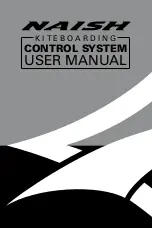
RAZAIR
‐
A1
‐
METRO
‐
III
‐
AFM
‐
001
Introduction
Thank
you
for
your
purchase
of
RAZBAM’s
Metroliner
III
SA227
‐
BC
aircraft
model.
We
at
RAZBAM
have
worked
to
deliver
to
you
the
most
accurate
model
of
this
fascinating
aircraft
and
we
promise
you
that
you
will
enjoy
flying
it.
The
Fairchild
Swearingen
Metroliner
or
the
Fairchild
Aerospace
Metro
is
a
19
‐
seat,
pressurized,
twin
turboprop
airliner
first
produced
by
Swearingen
Aircraft
and
later
by
Fairchild
The
Metroliner
was
an
evolution
of
the
Swearingen
Merlin
turboprop
‐
powered
business
aircraft.
Ed
Swearingen,
a
Texas
fixed
base
operator
(FBO),
started
the
developments
that
led
to
the
Metro
through
gradual
modifications
to
the
Beechcraft
Twin
Bonanza
and
Queen
Air
business
aircraft,
aircraft
he
dubbed
Excalibur.
Then
the
SA26
Merlin,
more
‐
or
‐
less
a
pressurized
Excalibur,
was
developed.
Through
successive
models
(the
SA26
‐
T
Merlin
IIA
and
SA26
‐
AT
Merlin
IIB)
the
engines
were
changed
to
Pratt
&
Whitney
Canada
PT6
and
then
Garrett
TPE331
turboprops.
These
were
marketed
as
business
aircraft
seating
eight
to
10
passengers.
An
all
‐
new
aircraft
was
built
and
called
the
SA226
‐
T
Merlin
III
with
new
nose,
wings,
landing
gear,
cruciform
horizontal
tail
and
inverted
inlet
Garrett
engines.
Ultimately
a
stretch
of
the
Merlin
III
was
designed,
sized
to
seat
22
passengers
and
called
the
SA226
‐
TC
Metro.
Because
FAA
regulations
limited
an
airliner
to
no
more
than
19
seats
if
no
flight
attendant
was
to
be
carried,
the
aircraft
was
optimized
for
that
number
of
passengers.
The
standard
engines
offered
were
two
TPE331
‐
3UW
turboprops
driving
three
‐
bladed
propellers.
The
Metro
and
Metro
II
were
limited
to
a
maximum
weight
of
12,500
pounds
(5,670
kg)
in
the
USA
and
countries
using
imperial
units,
and
5,700
kg
in
countries
using
SI
units.
When
this
restriction
was
lifted
the
Metro
II
was
re
‐
certified
as
the
Metro
IIA
in
1980
with
a
maximum
weight
of
13,100
pounds
(5,941
kg)
and
the
Metro
II's
TPE331
‐
3
engines
replaced
by
‐
10
engines
of
increased
power.
The
SA227
‐
AC
Metro
III
was
next,
also
initially
certified
in
1980
at
up
to
14,000
pounds
(6,350
kg)
this
increasing
to
14,500
pounds
(6,577
kg)
as
engines
and
structures
were
upgraded.
An
option
to
go
as
high
as
16,000
pounds
(7,257
kg)
was
offered.
Externally,
improvements
incorporated
into
the
Metro
III
were
a
10
ft
(3.05
m)
increase
in
wing
span,
four
‐
bladed
props,
redesigned
"quick
‐
access"
engine
cowlings
and
numerous
drag
‐
reducing
airframe
modifications,
including
landing
gear
doors
that
close
after
the
gear
is
extended.
A
version
with
strengthened
floors
and
the
high
gross
weight
option
was
offered
as
a
cargo
aircraft
known
as
the
Expediter.



































